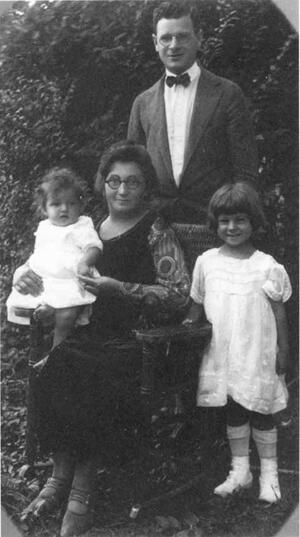Sidney Hillman
Sidney Hillman was born in 1887 in Zagare, Lithuania. Showing early academic promise, he left home at age 14 to attend rabbinical school, but was soon caught up in revolutionary politics and left school, becoming a leading activist in the Bund, a socialist union of Jewish workers. He was arrested twice and spent several months in Russian prisons, where he continued his revolutionary training.
After the 1905 Russian Revolution failed, Hillman fled, first to Manchester, England, where he had relatives, and then to the United States, arriving in Chicago in 1907. He worked first as a clerk at Sears, Roebuck & Co., and then became an apprentice garment cutter for a large manufacturer, Hart, Schaffner & Marx. Working conditions were very difficult, and when a dozen women workers sparked a citywide garment strike in 1910, Hillman joined them on the picket line. This act changed his life. He soon became a leader of the strike, helping to broker an agreement between the workers and Hart, Schaffner & Marx, and getting the manufacturer to recognize Local 39 of the United Garment Workers (UGW) and to agree to settle future disputes by arbitration. When the strike was over, he became a business agent for the new local. He never returned to the factory floor.
The strike also introduced him to his future wife, Bessie Abramowitz, one of the original leaders of the strike. She remained an important labor leader throughout her life. They were married in 1916 and had two daughters together.
In 1914, a group of active union locals affiliated with the UGW left it to form a new organization, the Amalgamated Clothing Workers of America (ACWA). Sidney Hillman had recently moved to New York to work for the International Ladies’ Garment Workers’ Union (ILGWU), but he moved back to Chicago to assume the presidency of the new Amalgamated. Under his leadership, the ACWA became the leading union in the men’s clothing industry in America.
Hillman believed the government should play a role in mediating between labor and management, and he took advantage of the opportunities presented by pro-union government policies during World War I and during the New Deal. Roosevelt appointed him to several labor related positions in his administration. Hillman also helped draft the National Labor Relations Act and the Fair Labor Standards Act. In 1936, Hillman joined his colleague David Dubinsky in founding the American Labor Party, to encourage progressives to support Roosevelt and other Democratic candidates. He was also one of the founders of the Committee for Industrial Organizing (CIO) in 1935 and was elected the Vice-President of the CIO when it became independent in 1937.
Hillman promoted a policy of “constructive cooperation” between the union and employers and was known for his effective dispute resolution tactics, which he had demonstrated during the 1910 strike and honed throughout his career. He also brought a focus on social services into the ACWA, creating low-cost cooperative housing, a workers’ bank, and unemployment insurance for union members.
When war broke out in Europe, Hillman supported U.S. involvement against the Nazis, and he once again held positions in Roosevelt’s administration, this time managing war production. He also helped create Labor’s Non-Partisan League to mobilize union support for Roosevelt’s presidential campaigns, and headed the CIO’s Political Action Committee (PAC).
Hillman died in 1946 after a long illness.
Sources:
AFL-CIO. “Key People in Labor History: Sidney Hillman.” Accessed April 10, 2012. http://www.aflcio.org/About/Our-History/Key-People-in-Labor-History/Sidney-Hillman-1887-1946.
Hillman Foundation. “Sidney Hillman.” Accessed April 10, 2012. http://www.hillmanfoundation.org/sidney-hillman.
Wikipedia. “Sidney Hillman.” Accessed April 10, 2012. http://en.wikipedia.org/wiki/Sidney_Hillman.
Steven Fraser. Labor Will Rule: Sidney Hillman and the Rise of American Labor. (New York: The Free Press, 1991).



